Here is a tutorial based on our experiments. Follow it to avoid doing the mistakes that we did, and be successful first time !
What plastic are the MN-90s made of ?
As an authentic Chinese product, no stamp applied anywhere helping identifying the kind of plastic it is made of: used mainly in the recycling phase to identify material, it seems that Chinese are not much yet concerned about that part of the life of the product. An easy way to identify if the body is made of ABS or PP, without having to burn it or use any chemicals, is simply to fill a bath with clear water and to drop the plastic in it. Guess what: ABS does sink… while PP floats ! You can verify that at home using different pieces of plastic. The majority of plastic have a discreet stamp hidden stating PP or ABS, which will confirm the nature of plastic it is made of.
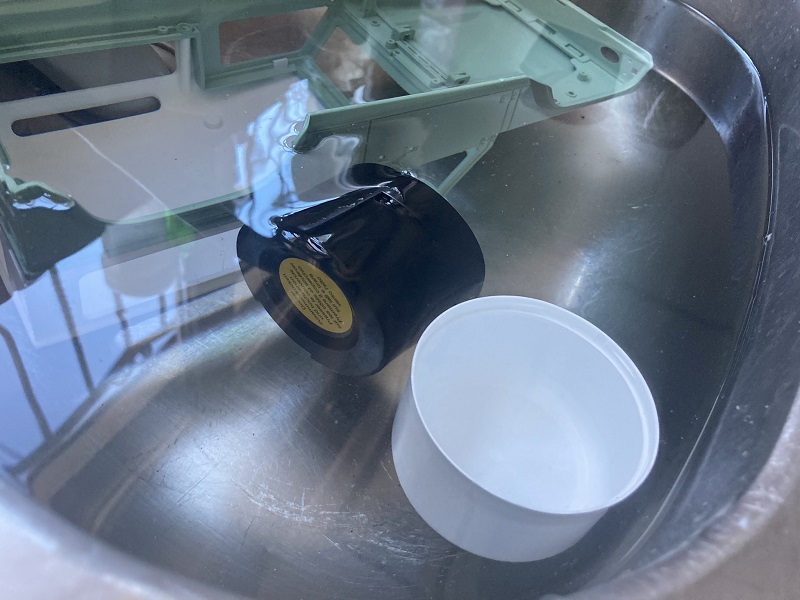
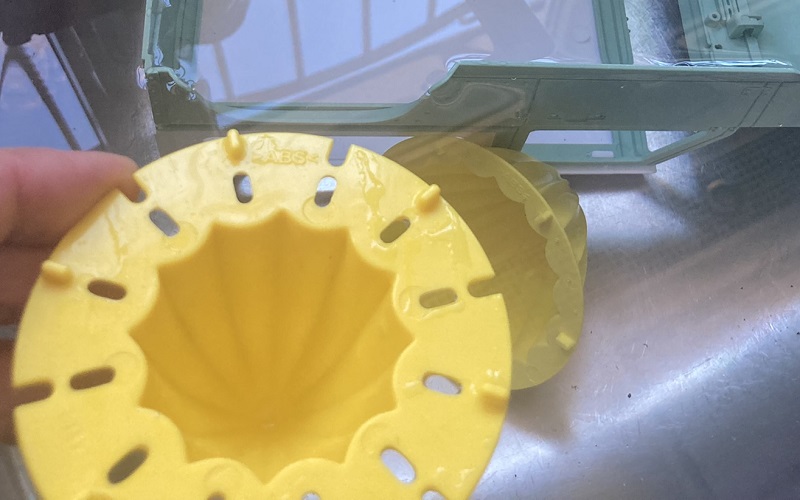
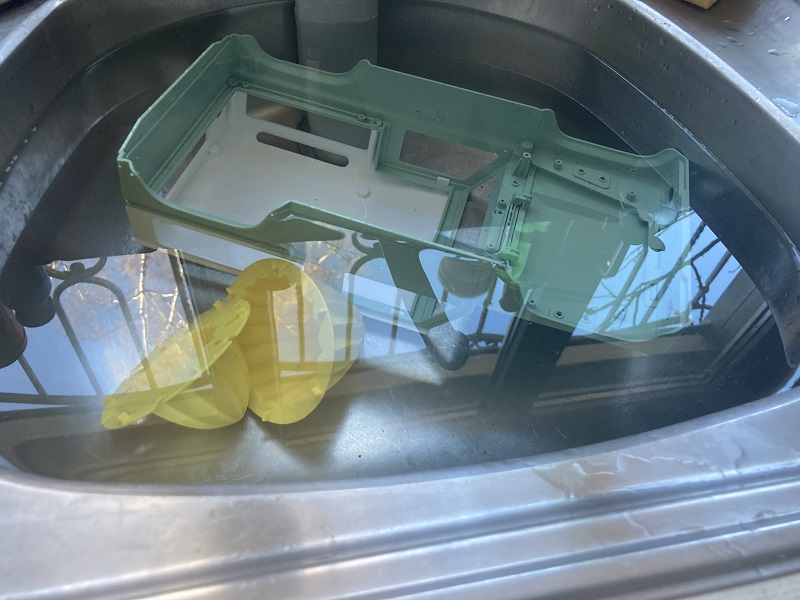
How do ABS can be worked on ?
The idea is to glue, repair, weld it. You can try to burn it, to melt it and create a bound that way. Well… burning plastic stinks, is messy, damn hot and not a very peaceful way of working on a Sunday afternoon. On the other hand, ABS plastic responds well to acetone chemical. Please do not sniff acetone and always use gloves when manipulating melted plastic: extremely volatile toxic vapours destroy your brain, and the liquid goes through the skin to give blood-cancer (leukemia). Find some old ABS plastic parts, wearing the ABS stamp to ensure they are, cut them into tiny pieces, about 1cm long/wide and try to melt them using acetone in a (small) glass jar you can close nice. The melting process takes time: be patient to find the right proportion of acetone mixed with plastic so that it melts and makes a kind of liquid paste you can use as a glue or filler. Too much acetone will accelerate the melting process but will be difficult to use as a welding medium, being too fluid. Not enough acetone and the ABS will not melt, or will be too sticky, hence difficult to use for our purposes.
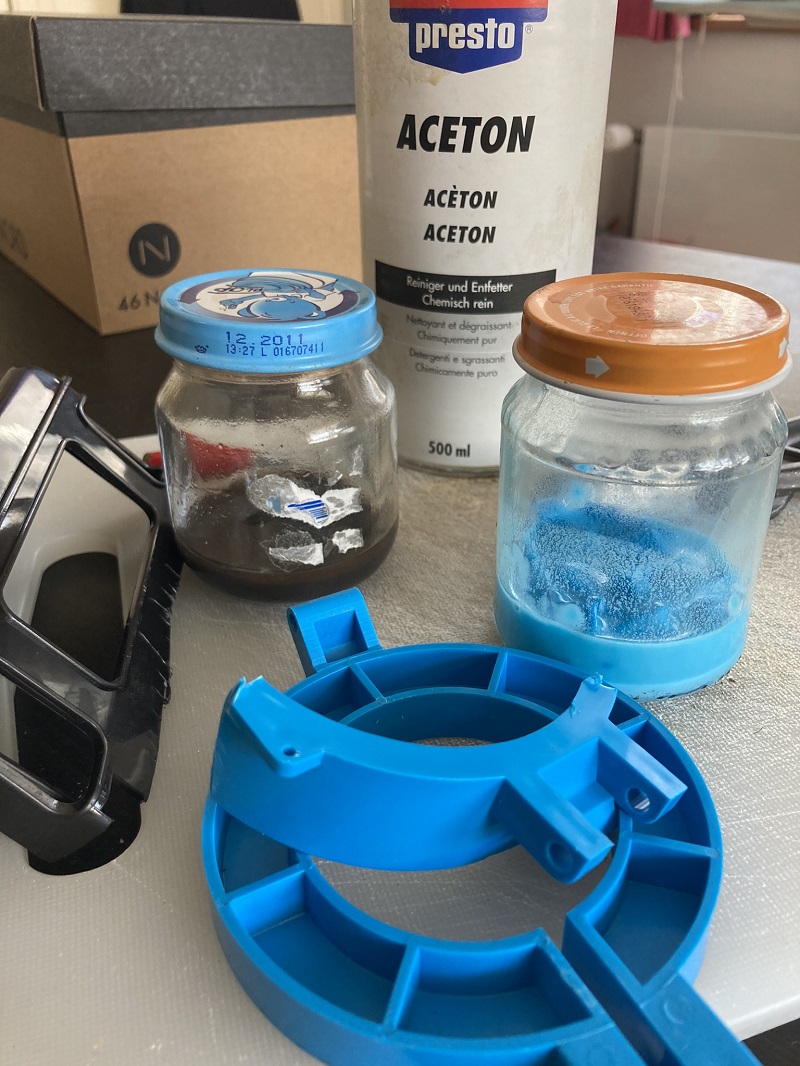
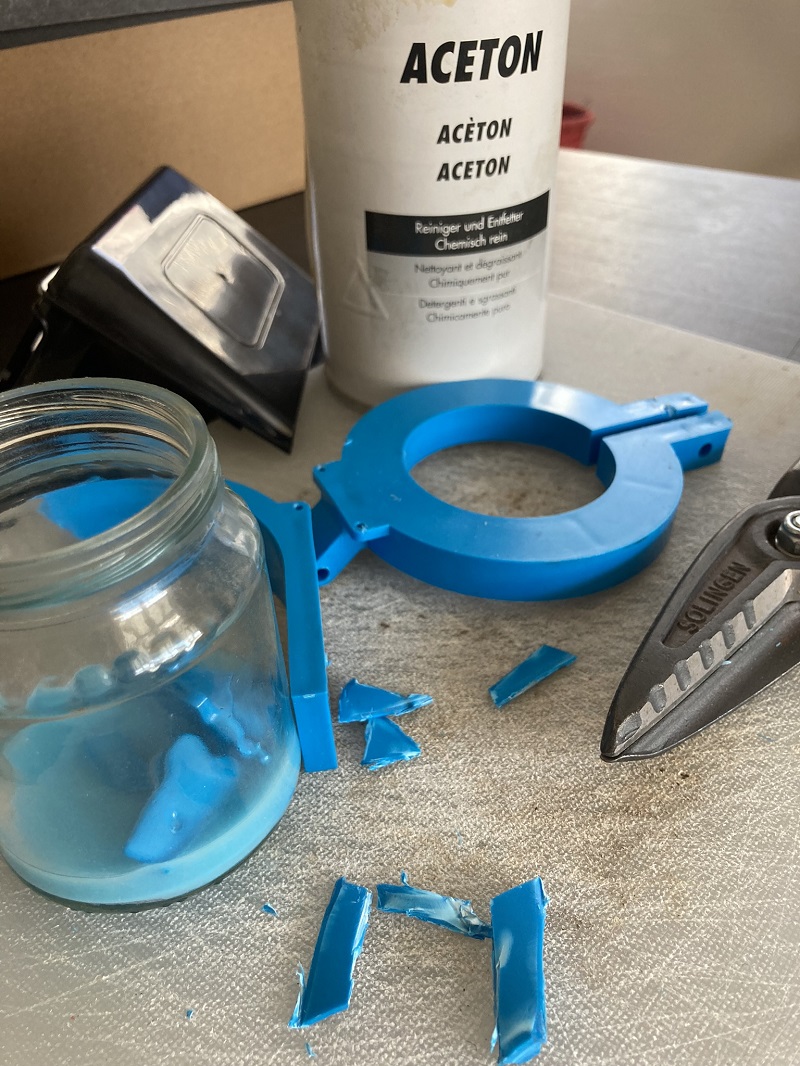
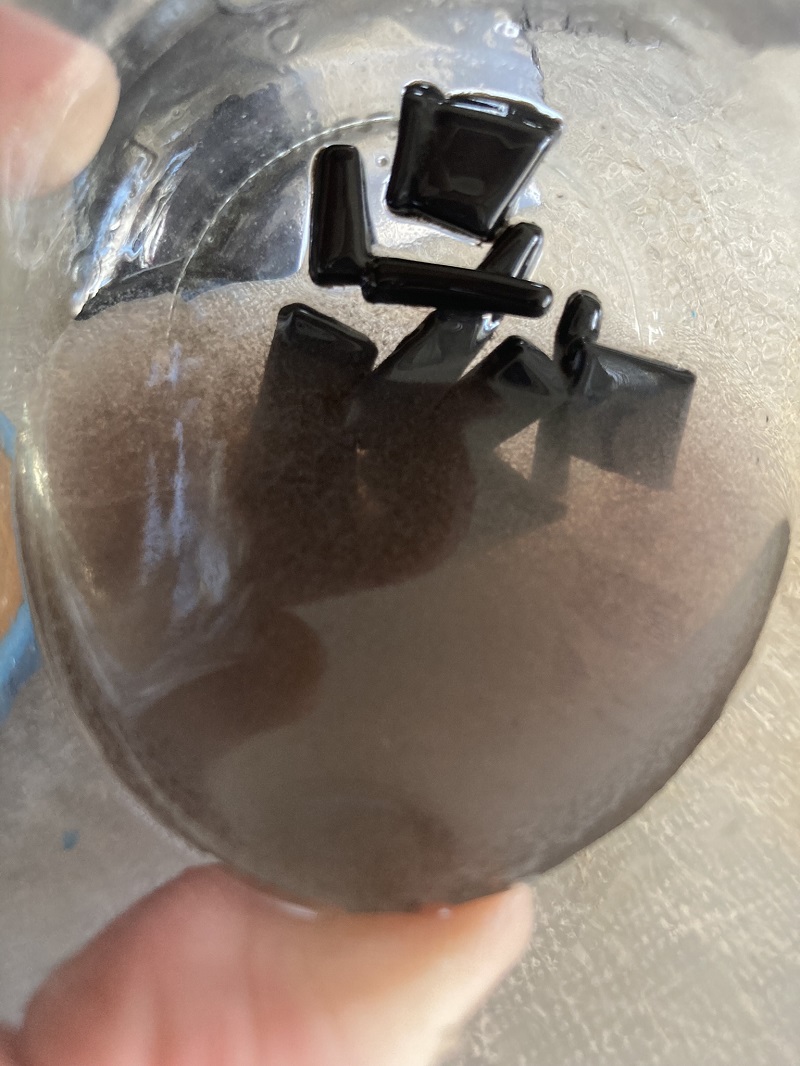

We made a ABS liquid reserve, just to see how it behaves and how fast it melts. As I was not 100% sure the MN-90 body was ABS, I made two different trials. The blue was some broken parts, duly ABS stamped. The black sample is a spare canopy that comes with the MN-90 kits, as we have more than necessary, I scrapped one to test it and, hopefully, to become the best compatible plastic bound, as it would use the same plastic that the body we want to stretch and weld. ABS plastics start to become soft and melty after just 15-20 min. But having the whole becoming plain liquid will take a few hours. The blue very hard plastic becomes a nice homogenized paste after less than 1h, the black plastic behaves a bit differently, not melting so nice. But, overall, after 30 minutes more… we obtain the perfect paste, sticky as hell, and as the acetone is very volatile, the paste gets hard and sticky very fast ! This glue is simply amazing…

Repairing a crack, welding panels, gluing parts
From the paste we prepared, we decided to make a test. I cut a panel and just put it back in a different place, to avoid having too nice and perfect lines matching together. That would be too easy and skew the test. The ABS liquid paste dries very fast, almost too fast, so it is very easy to hold the part to be glued in place, and simply wait 1 minute holding it… then it hangs by itself in place !
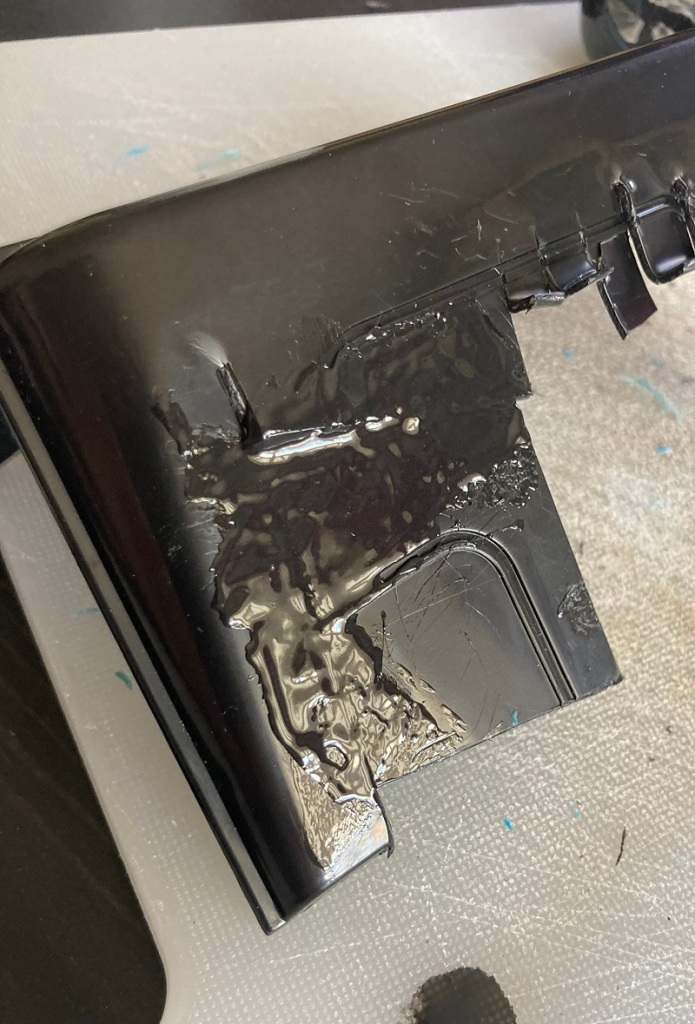
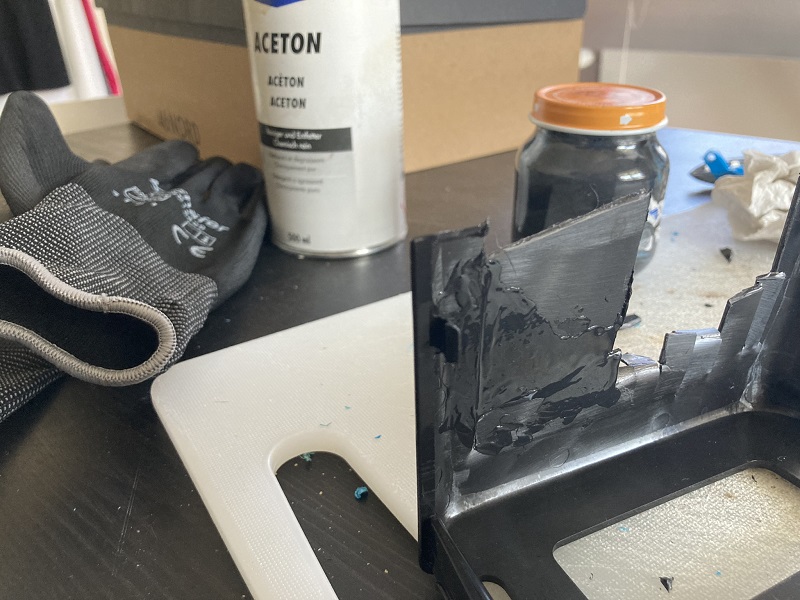

To finish the surface, of course, you need to use fine sanding paper and patience. As with any other material.
